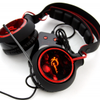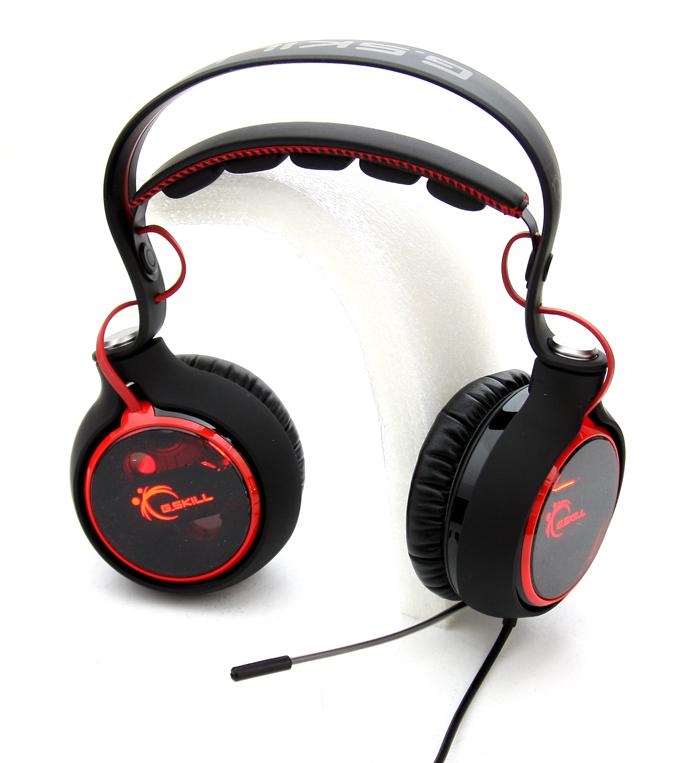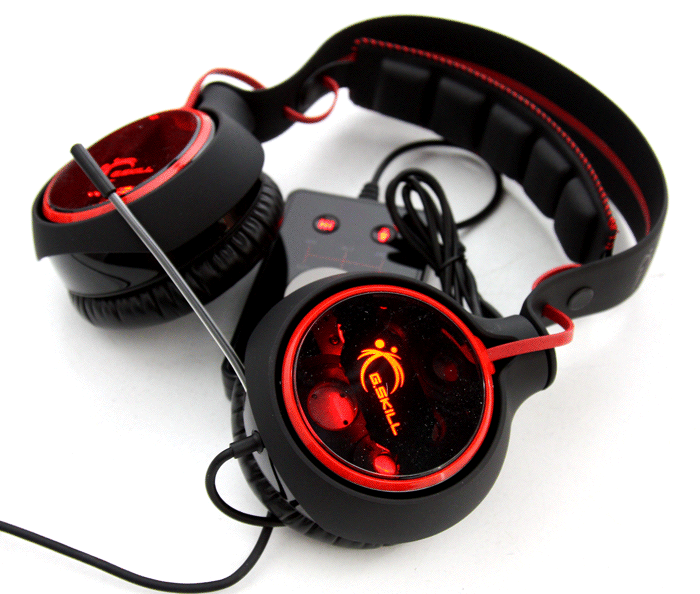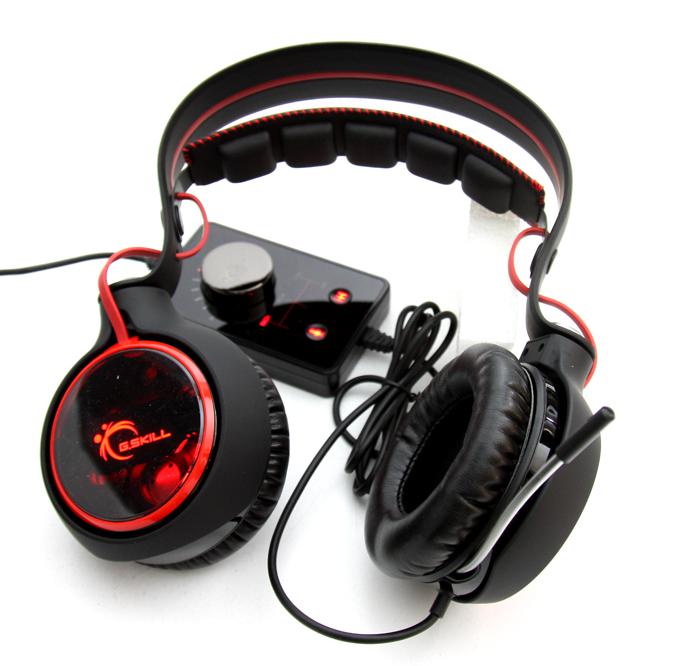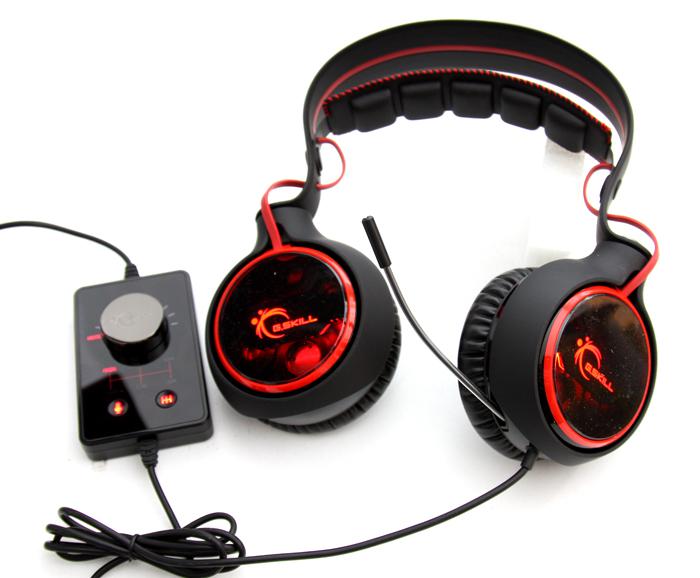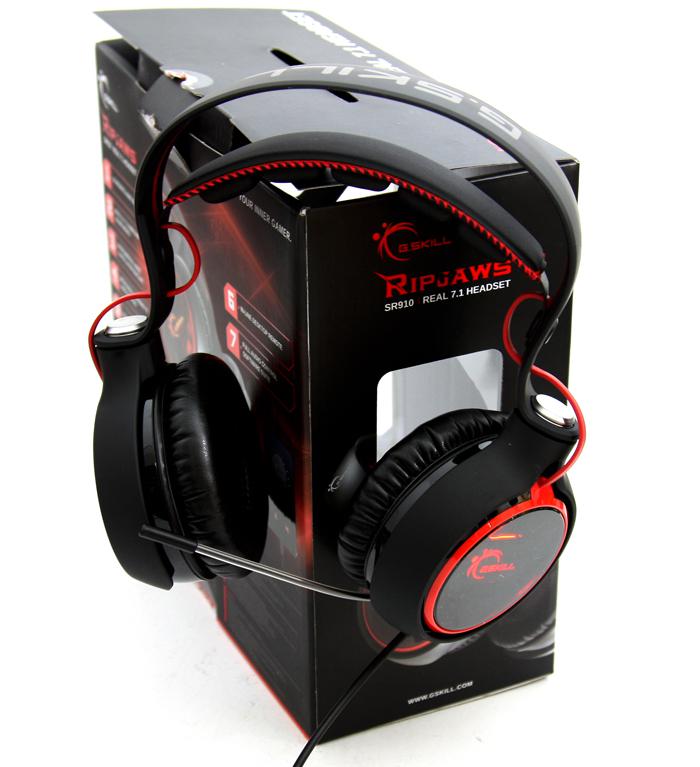Showcase
Showcase
So on this page some extra photos. Once you connect the device all kinds of LEDs activate themselves. Typically I am not a fan of logos on the ear-cups, but admittedly .. this was done in a tasteful manner. Mind you, actually two headsets have also been introduced into the Ripjaws line. The SR910 7.1 surround sound and then the SV710 uses Virtualized surround sound technology and (better) dual 50 mm drivers to create virtual 7.1 surround.Have a peek. Both come with a microphone that features environmental noise cancellation, which should limit background noise, and in-line audio control. A software suite is also included with the headset, which features a 10-band equalizer and the ability to customize surround sound speaker location.
